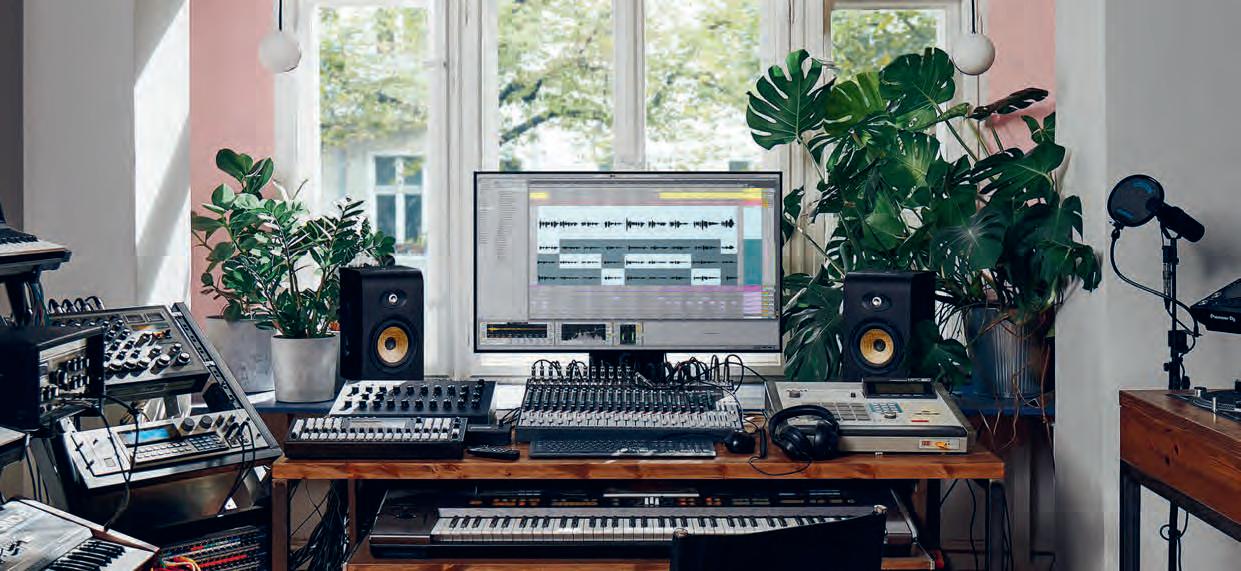
4 minute read
First Look: Ableton Live 11
by Furst Media
Just in case you’ve been living under a rock, Ableton is everywhere these days. The esteemed DAW has forever changed the way music is composed, tweaked and performed since its inception in 2001. The forthcoming Live 11 more than adds to this lineage, bringing with it a stack of new editing and broader audio functionality to make it a legitimate contender as the only DAW you will ever need. The big news is that Ableton Live 11 will finally add comping to its bag of tricks, allowing multiple takes to be edited and previewed with ease. Couple this with the new track linking features found in Live 11 and you've got a DAW that translates comfortably between Live and Studio applications, bringing a whole new level of functionality to the acclaimed software. For example, we could potentially now use these features to record multiple takes of a drummer to a click track, then simply by linking these channels, can flick through a multi-mic’d drum kit to pick the best takes and comp this into our linked channels with one click, phase coherent and all. Major improvements to the clip interface are another welcome addition to Live 11. Features that were previously locked to individual devices such as Velocity and Scale are now accessible on every clip created. Each clip can have its own set scale which allows for intuitive user input as the notes of the selected scale are highlighted on the piano roll and the key will automatically change on an Ableton Push, for example. From there, each note can have a range assigned in which velocity will be randomised within this area or you can apply a one click randomisation to selected notes which will maintain the velocity settings on loop. In combination to this each note can also have a probability if it will trigger or not separate to these settings allowing for creative indulgence to the max. Selecting multiple clips also lets you edit all of them at the same time without having to switch between them. You can also highlight one clip to edit while seeing other clips underlayed. This makes tracking your progressions very intuitive. Combine this with MIDI drawing now able to be locked/unlocked to a single note and you're making music quicker than you ever have. MPE (MIDI Polyphonic Expression) from instruments like the ROLI Seaboard can now be recorded as automation which also allows for extra feel whilst songwriting. With easy editing via the new clip interface, even without one of these devices you can automate these parameters with just your mouse and keyboard. Currently Wavetable, Sampler and Simpler can utilise this extension. In terms of live performance, Live 11 introduces tempo follow: the ability to automatically sync your project with external audio in real time. This is a huge step for bands wanting to utilise the power of this software while still having live elements in their sets. With this turned on all FX and audio will line up with the external signal - no more out-of-sync delays! Scene workflows have also had some major additions in this version, allowing for follow actions to be implemented across them as well as the ability to change BPM and time signatures for individual scenes. For performers, this allows you to have your whole live set on a single project without having to fiddle/remember what BPM your fourth track was while on stage or add variations to parts of a track without automating them. Device groups and macros have new features which allow you to use and show 1-16 macros, randomise all of them with one click (with the ability to turn off specific ones) and save multiple macro settings directly to the group. It seems one of the major drives behind this release is on easily and seamlessly creating variations in your music Ableton’s effects and instruments have been given a serious treatment in this version, adding quality of life upgrades for look and feel. Hybrid Reverb, one of the new native effect plugins combines a convolution reverb with an algorithmic reverb with fantastic results. There's a bunch of great sounding impulse responses built in or you can drag and drop your own for interesting outcomes. Being able to blend, and change the way the reverbs are routed make for endless possibilities for this effect. Ableton has promised more Max for Live devices in this upcoming release but currently there are only a few new additions available. PitchLoop89 by the legendary Robert Henke, who is one of Ableton's founders and created the much loved Granulator device, is the pick of the bunch. With a plethora of options available, this tape delay style plugin with pitch shifting is fantastic for creating subtle to dramatic changes with whatever you feed into it. Effects have been grouped in the browser to make new users feel more at home while adding dedicated groove and template folders so they're not so hidden behind menus as they were in previous editions. This revamp will also include new instruments with which Ableton is collaborating with Spitfire providing new takes on piano, brass and string sounds. CPU metering is now clearer and more legible than than ever. You can view average or real time CPU usage while also seeing how much each track is pulling. This is the best upgrade anyone could ask for as you can make quick decisions about what channel to freeze or bounce to create room for more tracks and effects, especially on slower workstations. All in all, Ableton Live 11 is a well thought out expansion of tools for music creators and engineers of all skill levels, combining new ways to interact and gorgeous new effects which I cannot wait to deep dive into and get creative with.
BY SAM MCNIECE
Advertisement
Ableton Live 11 arrives in early 2021.










